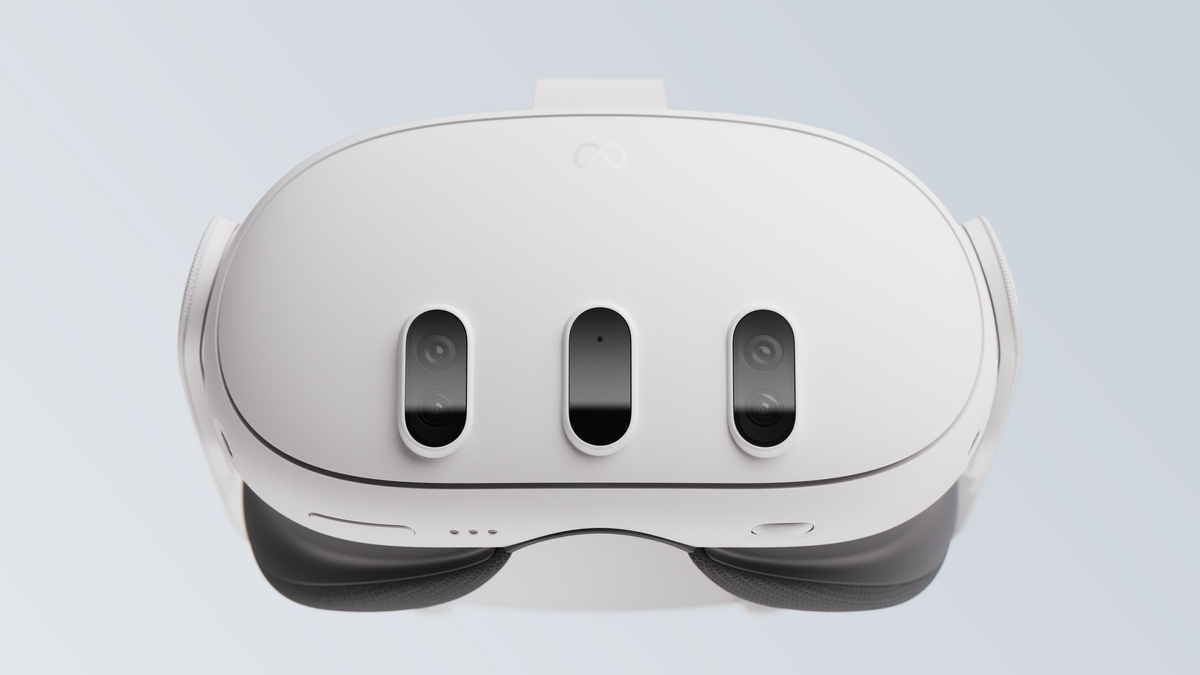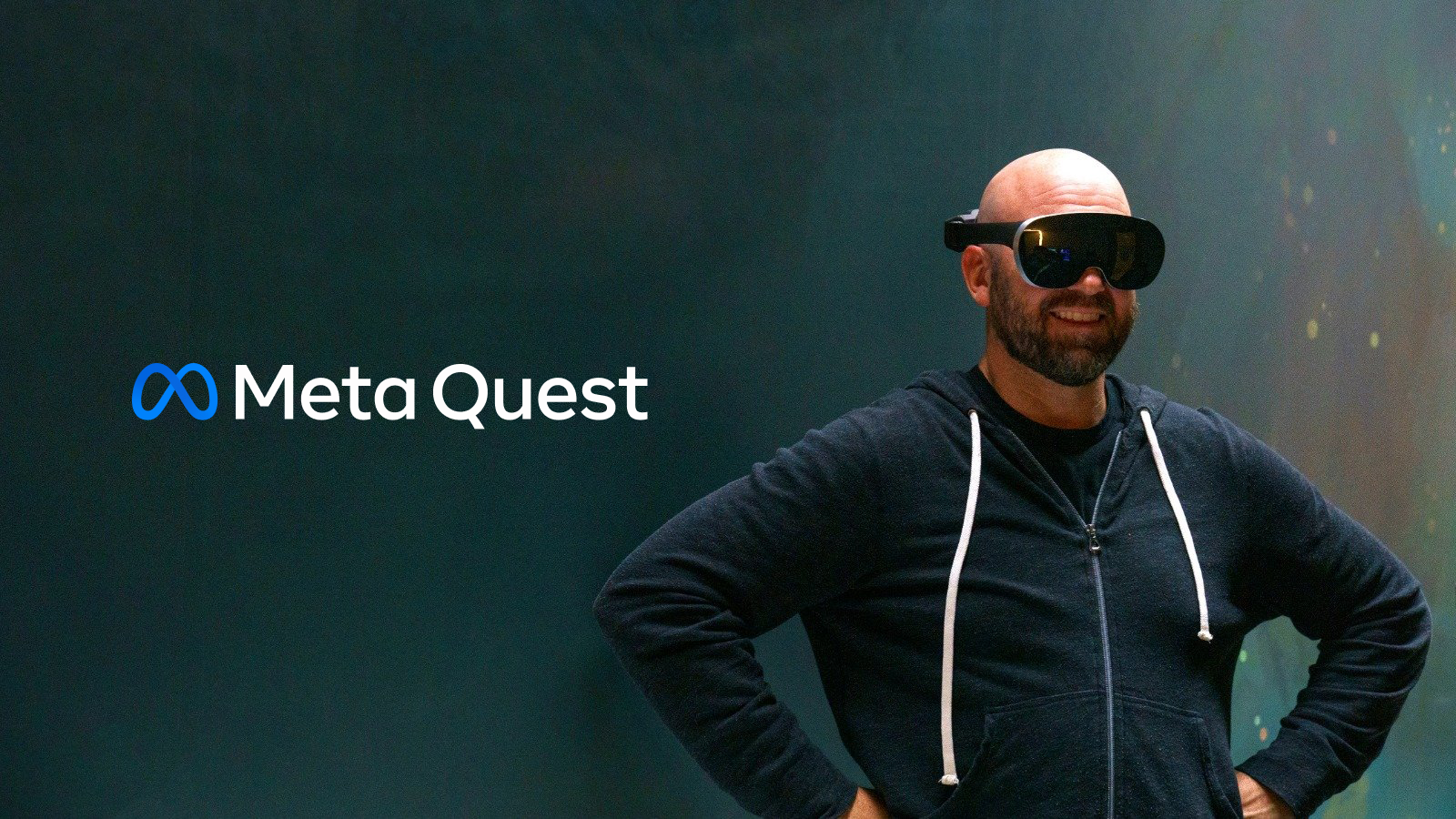Meta CTO Andrew Bosworth described the resolution, field of view, refresh rate, weight, and audio solution he expects a Meta headset to have in 2031.
Six years ago Facebook launched its first standalone headset Oculus Go, which lacked positional tracking or 6DoF tracked controllers, and five years ago it launched the first Quest with both. Today it sells Quest 3 with a much thinner design, pancake lenses, 2K per eye resolution, 120Hz refresh rate, color passthrough mixed reality, and ringless controllers. But what might Meta’s headsets be like in the early 2030s with a Quest 5 or Quest 6?
In a wide-ranging interview with Matthew Ball, the author of the book The Metaverse: And How It Will Revolutionize Everything, Bosworth was asked what the resolution, frame rate, weight, and other specifications he predicts Meta will offer seven years from now. Here’s how he responded:
“So when I’m looking seven years into the future, which is probably about as far as I can credibly glimpse anyways, we’re thinking on pixels per degree you really want to get up to at least 45, where text gets really good. 60 realistically is probably half retina resolution, but you actually won’t really be able to tell for reasons I won’t get into. So really you want to get up into the 50s to 60s range on pixels per degree. It starts to get pretty good after 40. And we’ve seen that obviously with Varjo, Apple Vision Pro, a few that have done that, and you see what you have to pay to get that kind of resolution today and what you sacrifice in field of view and brightness and a few other things. Those are real tradeoffs.
You want to get there with a decent field of view. It really does detract from immersion if you get much smaller, honestly, than where we are with the Quest 3 you start to notice. The Quest 2 is a little smaller, so if you get smaller than that you start to notice it. You have these cells in your eyes that detect vertical changes in motion. So you want to be wide enough in field view that you’re not constantly observing the edge of it. And I actually think taller field of view matters more than wider field of view, for immersion. Certainly wider field of view is more important for us as a species in terms of information density, because our eyes do see more horizontal, but vertical is a good way of convincing you that you’re immersed in a space, in a way that’s kind of deceptive.
The compute to run all this stuff thermally, in my opinion, has to be standalone, no wires. I don’t want to be seen adding a bunch of things. I’m not saying there’s no purpose for it. You can certainly imagine industrial applications.
The joke, by the way of the PC-standalone divide, is that we’ve actually now built the best, most popular PC headsets – and it’s the same one. You just run a wire to it or use Air Link.
I do think comfort is a tremendously important part of it. You’d like to see the weight pushed down. In particular, it’s not just the raw number of grams. It’s not the most important thing. How you balance it on the head, how close can the optical stack be to the eyes, that lever that is on the edge of your nose out to the edge of the device that controls the comfort on your nose, on your cheeks, the amount of pressure on your forehead, depending on what kind of strap you’re using, that’s determined there. So you can move that stack in a little bit, which is one of the big shifts from Quest 2 to Quest 3, that distance is quite a bit in and so it feels more comfortable. So I’d like to see the weight reduced by, you know, 100-200 grams by that point.
Audio is on a good track. You’ll get increasingly great stereoscopic audio. There are some limits what you can do when you’re going open ear. So you could do closed ear. Hopefully we give people the option over time. We kind of do today with the headphone jack.
What am I missing here? Yeah. The frame rate. So here’s another case where 120 feels pretty good. Now, obviously the gamers pushing 240 or more on PC games today would disagree and they love that buttery smoothness, and I respect that. In seven years I’m pretty skeptical that’s the trade that we’re going to make. One of the challenges for field of view, for example, is that there are quadratically more pixels at the edge of your field of view than in the center. And those pixels are much less than quadratically valuable to you. Like they are significantly the least important pixels. So you’re spending a quadratic amount more on pixels that are significantly less valuable, which is one of the reasons it’s hard to justify pushing field of view inside of these limited compute envelopes. I think frame rate similarly, I’m not saying 240 isn’t better than 120, just like I think 60 PPD is better than 40 PPD, but within these limited compute budgets you’re not seeing generational huge improvements on that. What you’re seeing is a lot more cleverness. So gaze foveated rendering, I think holds a real promise to unlocking the ability to drive resolution higher. Can we imagine a world where the display is capable of a higher frame rate, but you’re making sacrifices elsewhere in the system, you’re not able to multitask, you’re booting into a unit? Yeah, I can imagine those things, especially for industrial use cases. A lot of that depends on the panels though. I don’t think we’re going to optimize for it is what I would say.
By the way, funny story about 120Hz, which is a popular feature, and even 90 before that, when we weren’t running that. One of our engineers just figured out the panel was capable of it, and John Carmack was outraged [saying] if it’s capable of it, we should just unlock it for consumers who want it. And we did, and it’s been very popular. Some of these stories are legend, where you build for a spec and a certain power, but we do want to give consumers the ability to choose how they dedicate that power. More flexibility is one of the things that we continue to build into these systems.”
So if we’re hearing him right, the headset Bosworth describes would have:
- An angular resolution of at minimum 40 pixels per degree (PPD), and perhaps 50-60 PPD. For comparison, Quest 3 has 25 PPD in the center, and Oculus Go, from six years ago, had 15 PPD in the center.
- A vertical field of view taller than current Quest headsets. For reference, Quest 3 has a vertical field of view of 96°, while humans can see between 135° and 150° vertically.
- 100-200 grams less weight. For reference, Quest 3 weighs 515 grams including the straps and facial interface or around 400 grams without them, so assuming the same strap and facial interface weight this would bring those values down to 315-415 grams and 200-300 grams.
- A refresh rate of 120Hz, like Quest 3, as going beyond this isn’t worth the tradeoff compared to other specifications. While higher might be available as an option, it won’t be Meta’s focus.
- An integrated battery, like all Meta standalone headsets so far, not an external tethered battery like Apple Vision Pro.
- The ability to add closed-ear audio – perhaps via an attachment to pogo pins on the side?
Of course, these are all just predictions, and Bosworth himself is clear in describing it as a “credible glimpse”. Meta’s strategy, focus, and even leadership could change between now and then, as could the technology available from the supply chain. Breakthroughs could emerge to advance some of these specs further than Bosworth’s predictions, or unforeseen roadblocks could prevent others from arriving.
We highly recommend listening to the full interview, which is available as an episode of Bosworth’s podcast Boz To The Future on platforms like Spotify and Apple Podcasts.

In it, Bosworth is also asked about topics such as Meta’s enormous spending on AR/VR, what it will take to sell 100 million units of a headset, reverse passthrough (EyeSight), the path to transparent AR glasses, the role of AI in AR/VR, and whether Quest developers will get raw access to the cameras.






